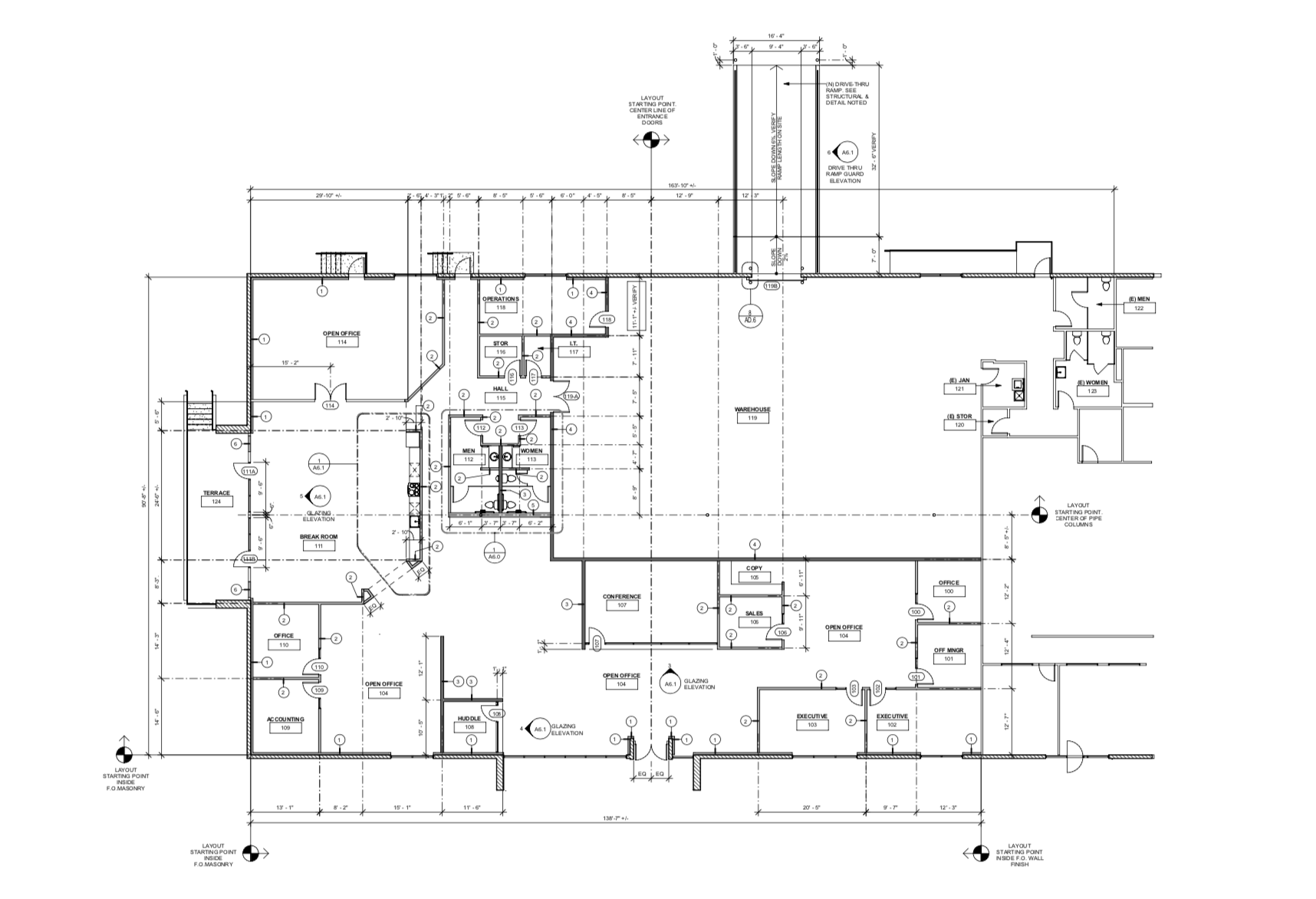As you learned in our last blog post, we moved into a brand new office! This will be our fourth office space and the first that we designed. With each new space we’ve moved into, we’ve taken chances and made changes to better suit our business, and we’ve learned a lot of lessons along the way. Today we’re sharing the most important lessons with you.
1. Work closely with your design team.
Not many know how to properly read a blueprint. That is why it’s important to hire a contractor that you can trust. That being said, when you do see the blueprint, make sure to ask a lot of questions. If there is a symbol that you don’t know, ask about it. If you aren’t thorough, you are at risk of missing small yet important details like electrical outlets. The smartest thing to do is designate one person on your team to oversee the planning and progress of the remodel. This person should have the time to meet with the contractors regularly. After several meetings with our contractors, this is the blueprint we came up with.

2. Keep an open mind.
You may have a lot of great ideas for your new office space, but after meeting with your contractor you may come to find that some of those ideas aren’t plausible. For example, there may be a load bearing wall that requires you to rethink your layout. Or you may second guess your brilliant idea once you realize that it doesn’t look as good as you thought it would in person.
The space must also be ideal for your team. That means making decisions that improve the functionality of the building for everyone. The best way to keep everyone in mind is to organize a meeting to discuss everyone’s needs.
These are some of the questions we asked ourselves:
- Is there a large enough meeting area?
- Does everyone have a place that they feel comfortable in?
- Will everyone have access to the technology that they need?
- Does the layout of the space work for the different departments at OctoClean?
- Is there a place in the office that makes our franchise owners and remote employees feel welcome?
3. Plan to make changes.
When you begin to tear walls down and pull up old floors, you are going to find damage that you didn’t know was there. When this happens, you’ll need to think quickly on your feet. It was always our plan to have polished concrete floors in the majority of our office. When we got around to pulling the carpet up, we were sad to find cracks all throughout the concrete. Our contractors explained that they would do their best to save the floors, but it was only smart to find an option B in case they were unsalvageable. Luckily, we have the polished concrete floors that we wanted, but not without sacrifice. They aren’t perfect, but most concrete floors aren’t.
4. Research rules and regulations.
The average person doesn’t know the rules and regulations associated with remodeling a new commercial office. Before you go into the construction phase, it is smart to do your research. In the process we learned that our kitchen needed to be ADA compliant because it includes an oven and stove top. We also learned that LED lights with sensors that trigger the lights to automatically turn on as you walk through the building were also required. We also needed to include a specific amount of lights in our warehouse because of its size. If you do your research, you can buy the right appliances the first time around and factor in the cost at the very start.
5. Plan for Future Growth.
In the past when we moved into a new office, we made the mistake of selecting an office that was big enough for our team of the time. Later we would have to move into a new space to accommodate for growth, again. We’ve learned from our mistake and now have an office space that can accommodate a lot of growth. Including a large reception area with many open concept work spaces gives us the options to put up walls to create traditional offices if needed. If you plan ahead, you won’t need to fight for space later.
Let’s Summarize
Remodeling and moving can be stressful and overwhelming, but keep a level head. When construction is complete and you are settled into your new office, it will all be worth it in the end. But remember to do the following:
- Ask questions about the blueprints and follow construction closely.
- Keep an open mind to different ideas.
- Plan to find additional work.
- Make sure you know the rules and regulations of a commercial office space.
- Take a leap and plan for the future.
